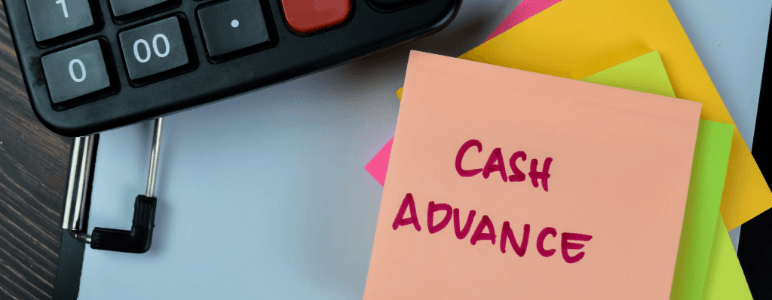When your car breaks down unexpectedly or a medical emergency strikes, waiting weeks for a traditional bank loan isn’t always an option. Cash advances, along with cash loans and fast loans, offer a solution for those moments when you need funds quickly, but understanding your options and the associated costs is crucial for making an informed decision.
A cash advance provides immediate access to money when emergencies arise, but it’s important to understand how these financial products work, what they cost, and which option might be right for your situation. Many people now turn to cash advance online services and cash advance apps for convenience and speed.
What is a Cash Advance?
A cash advance is a short-term loan designed to provide quick access to funds for emergency expenses when traditional financing options aren’t available or practical. Unlike conventional bank loans that may take days or weeks to process, cash advances typically offer same day approval and funding, making them an attractive option for urgent financial needs. Fast loan advance and instant cash advance in minutes are common features offered by many providers.
The key difference between cash advances and traditional bank loans lies in their speed and accessibility. While banks typically require extensive documentation, credit checks, and lengthy approval processes, cash advances prioritize quick access to funds. Most lenders can process applications in minutes and transfer money to your bank account within hours. Many cash advance options are available as same day loans, including payday loans no credit check or cash advance no credit check alternatives.
Common reasons people turn to cash advances include:
- Medical bills and healthcare emergencies
- Car repairs and transportation costs
- Rent or utility payments to avoid late fees
- Home repairs and unexpected maintenance
- Emergency travel expenses
Typical loan amounts for cash advances range from $20 to $5,000, depending on the lender and your income verification. The amount you qualify for is usually based on your monthly income and ability to repay the loan, rather than traditional credit scoring models.
Types of Cash Advances Available
The cash advance market offers several distinct options, each with different terms, costs, and repayment structures. Understanding these differences can help you choose the option that best fits your needs and financial situation. These cash advances serve as a form of emergency loans, providing quick access to funds when unexpected expenses arise.
Payday Loans
Payday loans represent the most common type of cash advance, designed to bridge the gap until your next paycheck arrives. These short term loans typically require repayment within 14 to 30 days, with the full loan amount plus fees automatically withdrawn from your checking account on your next payday. Payday loans no credit check are widely available, making them accessible to many borrowers.
Payday lenders generally don’t perform traditional credit checks, making them accessible to borrowers with poor credit or no credit history. However, they do require proof of regular income through direct deposit or pay stubs, along with an active bank account for fund disbursement.
Bank Account-Based Advances
Many financial apps and some banks now offer cash advances tied directly to your bank account activity. These services analyze your direct deposit history and spending patterns to determine eligibility and advance amounts, typically ranging from $50 to $500.
Banking apps may offer these advances with 0% APR for qualified customers, making them significantly more affordable than traditional payday loans. The advance is typically repaid automatically when your next direct deposit hits your account. Cash advance apps are becoming a popular way to access fast loan advance funds quickly and conveniently.
Credit Card Cash Advances
If you have an existing credit card with available credit, you can obtain a cash advance through your credit limit. This option allows you to withdraw cash from ATMs or bank branches, with the amount added to your credit card balance.
While convenient, credit card cash advances typically carry higher interest rates than regular purchases and begin accruing interest immediately without a grace period. Additionally, most issuers charge a cash advance fee, usually 3% to 5% of the advance amount.

How to Apply for a Cash Advance
The application process for most cash advances is designed to be quick and straightforward, often taking just 2-5 minutes to complete online. Understanding what to expect can help streamline your experience and improve your chances of approval.
Most lenders offer both online application options and in-store locations, giving borrowers flexibility in how they access services. Online loans applications typically provide faster processing and same-day funding, while in-store visits allow for face-to-face interaction and immediate cash disbursement.
The Typical Online Application Process for an Emergency Loan Includes:
- Basic personal information – Name, address, phone number, and email
- Employment and income details – Employer information, monthly income, and pay frequency
- Banking information – Account and routing numbers for fund transfer and repayment
- Loan amount request – The specific amount you need, within the lender’s limits
For same day funding, most lenders require online applications to be submitted before 10:30 AM on business days. Applications submitted after this cutoff or on weekends typically receive next-business-day processing.
Eligibility Requirements
While cash loans, like cash advance, eligibility requirements are generally less stringent than traditional loans, lenders do maintain certain standards to manage risk and comply with state regulations.
Active Checking Account Requirement
All cash advance providers require borrowers to maintain an active checking account for fund disbursement and repayment. This account must be in good standing without excessive overdraft activity or recent closures. Some lenders may accept savings accounts, but checking accounts are preferred for automatic payment processing.
Age and Residency Requirements
Borrowers must typically be at least 18 years old (21 in some states) and provide proof of U.S. citizenship or permanent residency. Additionally, you must be a resident of a state where the lender is licensed to operate, as regulations vary significantly by jurisdiction.
Income Verification
Lenders require proof of regular income to ensure repayment capacity. Acceptable verification includes:
- Recent pay stubs showing consistent income
- Direct deposit records in your bank account
- Government benefit statements
- Self-employment income documentation
Most lenders prefer to see at least $800 to $1,000 in monthly income, though requirements vary by provider and loan amount requested.
State Licensing and Restrictions
Cash advance availability varies significantly by state due to different regulatory frameworks. Some states have banned payday lending entirely, while others have implemented interest rate caps or other consumer protections. California residents, for example, have access to specific state-regulated options that may offer more favorable terms than unregulated alternatives.
Cash Advance Costs and Fees
Understanding the cost structure of cash advances is crucial for making informed borrowing decisions. These products typically carry higher costs than traditional loans, but fees and interest rates can vary dramatically between providers and advance types.
Cash advance fees generally follow one of several structures, with many lenders using flat fee models based on the advance amount. Common fee ranges include:
- Small advances ($20-$100): $1.60 to $15 flat fee
- Medium advances ($100-$300): $15 to $25 flat fee
- Larger advances ($300-$1,000): $25 to $40 flat fee
When expressed as an annual percentage rate (APR), these fees can range from 0% for some bank-based apps to over 400% for traditional payday loans lenders. However, since these are short-term advances typically repaid within 30 days, the APR can be misleading compared to longer-term loan products.
One significant advantage of many cash advances is the lack of traditional credit check fees. While some lenders may perform soft credit checks that don’t impact your credit score or appear on your credit report, many providers focus primarily on income verification and banking history rather than credit scores.
Hidden Fees to Watch For
Beyond the basic advance fee, borrowers should be aware of potential additional costs:
- Late payment fees – Charged when payments are missed or insufficient funds prevent automatic withdrawal
- Rollover or extension fees – Applied when borrowers can’t repay on time and need to extend the loan term
- Failed payment fees – Assessed when automatic withdrawals are rejected due to insufficient funds
- Early repayment penalties – Some lenders charge fees for paying off advances early, though this is less common
Funding Speed and Repayment Terms
One of the primary advantages of cash advances is their speed of funding. Most providers can deliver funds to your bank account within hours of approval, making them ideal for genuine emergencies that require immediate financial attention.
For online loan applications submitted before 10:30 AM on business days, same day funding is standard across most providers. The exact timing depends on your bank’s processing schedule, but funds typically appear in checking accounts by end of business day. Applications submitted after the cutoff time or on weekends usually receive next-business-day processing.
Direct deposit is the most common funding method, as it’s faster and more secure than mailed checks. Some providers also offer expedited funding for an additional fee, delivering money within hours even for late-day applications.
Repayment Options and Terms
Cash advance repayment terms typically range from 14 to 30 days, though some installment loans options extend up to several months. The repayment structure you choose can significantly impact the total cost and your ability to manage the debt.
- Automatic Withdrawal:
Most lenders prefer automatic withdrawal from your checking account on your specified payday. This method ensures timely repayment and reduces the risk of late fees, but requires careful account management to avoid overdrafts. - Manual Payment Options:
Some providers allow manual payments through their website or app, giving borrowers more control over timing. While this flexibility can be helpful, it requires active management to avoid late fees and potential legal consequences. - Installment Structures:
For borrowers who need more time to repay, installment cash advances break the total amount into smaller monthly payments. While this reduces the immediate repayment burden, it typically increases the total cost due to extended fee accrual.
Cash Advances vs. Other Emergency Funding Options
When facing a financial emergency, cash advances are just one option among several alternatives. Understanding how they compare to other emergency funding sources can help you choose the most appropriate solution for your situation.

Payday Loans vs. Cash Advances
While often used interchangeably, payday loans and cash advances have subtle differences. Traditional payday loans from storefront payday lenders typically carry higher fees and more aggressive collection practices. In contrast, cash advances from banks or financial apps often offer more favorable terms and better customer service.
The repayment structure also differs, with payday loans requiring full repayment on your next payday, while some cash advances offer more flexible repayment schedules.
Credit Card Cash Advances
Credit card cash advances can be more expensive than other options due to their immediate interest accrual and lack of grace periods. While they offer higher loan amounts and established relationships with your existing card issuer, the annual percentage rate for cash advances is typically higher than the card’s purchase rate.
Additionally, credit card advances count against your credit limit, potentially affecting your credit utilization ratio and credit score.
Personal Loans from Banks
Traditional personal loans offer lower interest rates and longer repayment terms but require good credit scores and lengthy approval processes. These loans are better suited for planned expenses rather than emergency situations requiring immediate funding.
The application process for personal loans can take several days to weeks, making them impractical for urgent financial needs.
Advantages for Bad Credit Borrowers
Cash advances provide significant advantages for borrowers with poor credit or no credit history. Since most providers don’t require traditional credit checks, past financial difficulties don’t automatically disqualify applicants. Instead, lenders focus on current income and banking activity to assess repayment ability.
This accessibility makes cash advances one of the few options available to consumers who may be denied traditional bank loans or credit cards.
Top Cash Advance Providers in 2025
The cash advance market includes both traditional storefront lenders and innovative financial technology companies offering improved terms and user experiences. Understanding the leading types of providers can help you identify the best option for your specific needs.
Bank-Based Providers
Bank-based cash advance services often offer advances up to several hundred dollars with competitive or zero percent APR for qualified customers. These services are typically integrated into mobile banking platforms, making it convenient for existing customers to access funds quickly without traditional fees.
Such advances are usually repaid automatically from your next direct deposit, typically within 30 days. Eligibility is based on your account history and direct deposit activity rather than credit scores.
Traditional Storefront Lenders
Traditional storefront lenders operate physical locations nationwide, providing both online and in-person cash advance services. Their storefront presence offers immediate cash disbursement and face-to-face customer service, which some borrowers prefer over purely digital alternatives.
These lenders offer advances up to a few thousand dollars, with fees varying by location due to state regulations. Their online loans platforms also provide convenient application and account management tools.
App-Based Services
App-based cash advance providers represent the new generation of financial technology, offering advances with transparent fee structures and user-friendly mobile interfaces. These services typically integrate with your bank account to analyze income patterns and determine eligibility automatically.
App-based providers often offer additional features like budgeting tools, spending insights, and financial education resources to help users manage their money more effectively.
State-Specific Options
Some providers focus on specific states with favorable regulatory environments. State-specific lenders offer advances tailored to local regulations, potentially providing better terms than national providers operating under federal guidelines.
These options often have a deeper understanding of local laws and may offer more personalized customer service.
Risks and Considerations
While cash advances provide valuable emergency funding, they also carry significant risks that borrowers must understand before proceeding. Responsible use requires careful consideration of these potential downsides and planning for repayment.
The most significant risk associated with cash advances is the potential for debt cycles. When borrowers can’t repay their advance on time, they may roll over the loan or take additional advances to cover the original debt. This pattern can quickly lead to overwhelming debt loads and fees that exceed the original loan amount.
Impact on Bank Account Management
Cash advances require automatic withdrawals from your checking account, which can lead to overdraft fees if funds aren’t available on the repayment date. Managing your account balance carefully around repayment dates is crucial to avoid additional bank fees that can double the cost of your advance.
State Regulations and Consumer Protection
Cash advance regulations vary significantly by state, with some jurisdictions offering strong consumer protections while others provide minimal oversight. Understanding your state’s laws can help you identify your rights and protections as a borrower.
Some states have implemented interest rate caps, cooling-off periods between loans, or database systems to prevent borrowers from taking multiple advances simultaneously.
Alternative Solutions
Before taking a cash advance, consider these alternatives:
- Emergency assistance programs – Local charities, religious organizations, and government programs may offer emergency financial assistance
- Payment plans – Many utility companies, medical providers, and landlords offer payment plans for past-due accounts
- Employer advances – Some employers provide payroll advances to employees facing emergencies
- Credit union loans – Credit unions often offer small-dollar loans with better terms than payday lenders

Frequently Asked Questions
Can I Get a Cash Advance With Bad Credit Or No Credit History?
Yes, most cash advance providers don’t require traditional credit checks and instead focus on your current income and banking activity. This makes them accessible to borrowers with poor credit scores or limited credit history. However, some providers may perform soft credit checks that don’t impact your credit score or appear on your credit report.
The key qualification factors are regular income through direct deposit, an active bank account in good standing, and meeting the lender’s minimum income requirements, typically around $800 to $1,000 monthly.
How Quickly Can I Receive My Cash Advance Funds?
For applications submitted before 10:30 AM on business days, most providers offer same day funding directly to your checking account. The exact timing depends on your bank’s processing schedule, but funds typically appear by end of business day.
Applications submitted after the cutoff time or on weekends usually receive next-business-day processing. Some providers offer expedited funding for an additional fee, delivering money within hours regardless of submission time.
What Happens If I Can’t Repay My Cash Advance On Time?
If you can’t repay your advance on the scheduled date, contact your lender immediately to discuss options. Many providers offer payment plans or extensions, though these typically involve additional fees. Avoiding communication with your lender can lead to additional collection efforts and potential legal action.
Some lenders may attempt multiple withdrawal attempts from your bank account, potentially causing overdraft fees. It’s crucial to address repayment issues proactively rather than avoiding the situation.
Are Cash Advances Available In All 50 States?
No, cash advance availability varies significantly by state due to different regulatory frameworks. Some states have banned payday lending entirely, while others have implemented strict interest rate caps or other consumer protections that limit provider options.
Before applying, verify that your chosen provider is licensed to operate in your state and understand the specific regulations that apply to your advance. Some providers may offer different products or terms in different states to comply with local laws.
Responsible Use of Cash Advances
Understanding cash advances and their alternatives empowers you to make informed decisions during financial emergencies. While these products provide valuable access to quick funding, their higher costs make them most appropriate for genuine emergencies rather than routine expenses. By carefully evaluating your options, understanding the terms, and planning for repayment, you can use cash advances responsibly when unexpected financial needs arise.
Remember that the best emergency funding strategy involves building an emergency savings fund over time, but when that’s not possible, knowing your options ensures you can access the help you need while minimizing long-term financial impact.
Understanding how cash advances work, and exploring alternatives, can help you make smarter financial choices in emergencies. While these loans offer fast access to funds, their higher costs mean they should be used only for real, time-sensitive needs, not everyday expenses.
By reviewing the terms carefully, comparing options, and planning your repayment, you can use cash advances responsibly without increasing your financial burden. Building an emergency savings fund over time remains the best safety net, but when that’s not possible, knowing your borrowing options helps minimize long-term costs.
5 Star Loans offers cash advance services with clear terms, no hidden fees, and fast processing. Start your cash advance request today and get matched with an offer with no obligation.


